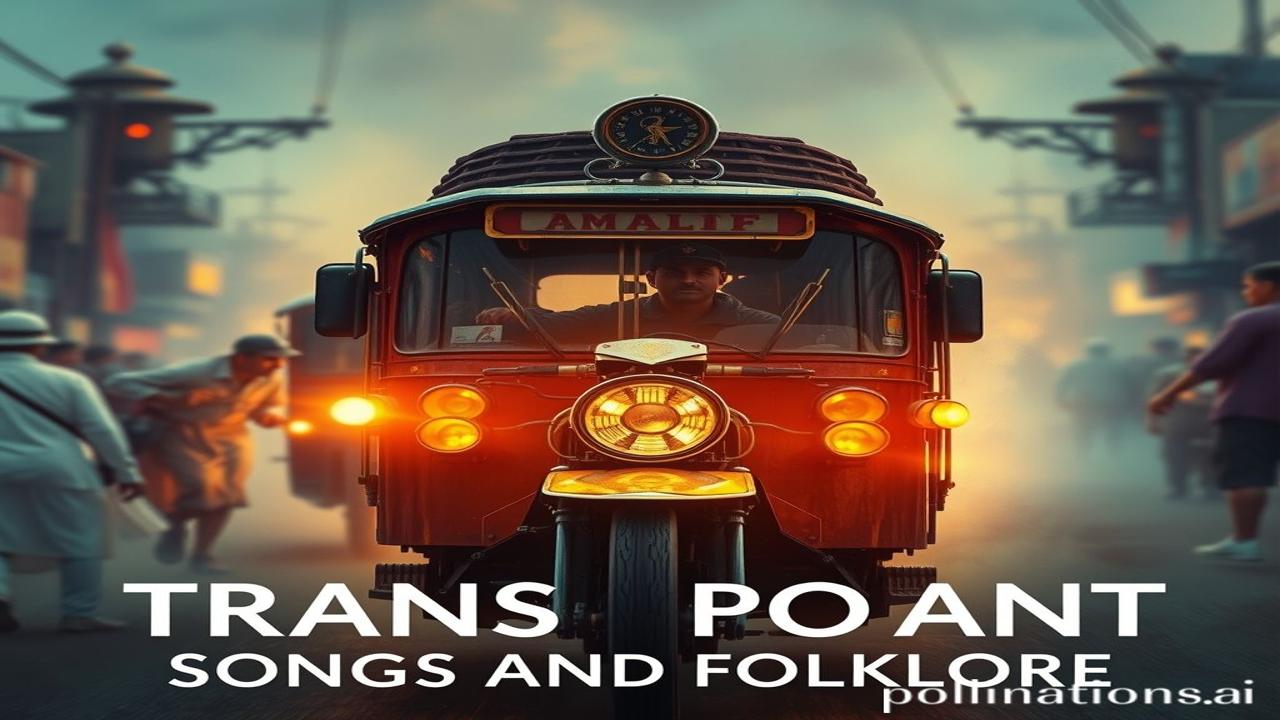Dhool Bhari Sadak, Dhun Bhare Safar: Transportation Songs and Folklore of India
Kabhi socha hai, agar woh pahiye na bante toh kya hota? Zindagi kitni alag hoti? Aaj hum jis duniya mein hain, uski neev toh unhi pahiyaon ne rakhi thi. Aur har pahiye ke ghoomne ki awaaz mein, har safar mein, kahi na kahi, geet chhupa hua hai. Ek aisa geet jo India ki dhool bhari sadakon se, rajaon ke shahi juloos tak, har jagah gunjata hai. Let’s explore the beautiful world of Transportation Songs and Folklore in India.
The Wheel Turns: A Historical and Cultural Glance
Transportation songs and folklore are a reflection of India’s history, culture, and evolution. From bullock carts (bailgaadi) to trains, these songs documented the journeys, the emotions, and the social fabric associated with travel.
Think about it – before highways and airplanes, a journey was a significant event. It was often fraught with peril, full of anticipation, and always a story worth telling. Dates? Well, these traditions are ancient! They evolved over centuries. Even the Rigveda mentions chariots (rathas), which became part of mythological tales and inspired countless songs.
Why are these songs important? Because they show us what mattered to people. They tell us about their hopes, their fears, and their connection to the land. These songs weren’t just entertainment; they were a way to share knowledge, preserve history, and build community. Think of it as the early internet!
Zameeni Sach: Life on the Move
Imagine a bustling marketplace in the 18th century. Dust swirls in the air, the aroma of spices fills your nostrils, and the rhythmic clatter of horse-drawn carriages mingles with the cries of vendors.
“Oye Ramu kaka, bailgaadi taiyar hai? Boriya mein gehun lekar jana hai gaon.”
This was daily life for many. Farmers transporting their produce to market, merchants traveling to distant lands, pilgrims journeying to sacred shrines. Transportation wasn’t just about getting from point A to point B; it was interwoven with their livelihood, their faith, and their social interactions.
Rulers like Ashoka understood the importance of roads and waterways. He invested in infrastructure to connect his empire, knowing that trade and communication were crucial for stability and prosperity. Think of the Grand Trunk Road, a lifeline connecting east and west, and the countless folk songs celebrating its importance. Even the Devadasis in temples would sing songs as the palanquins carrying the deities were taken through the streets during festivals.
Dharohar aur Pehchan: Echoes in Modern India
Even today, the spirit of these transportation songs lives on. Think of the Bhajan Mandalis singing devotional songs on long bus journeys, or the folk musicians who still perform songs about the Yamuna and the boats that ply its waters.
You can hear echoes of these traditions in Bollywood songs too! Remember “Chaiyya Chaiyya” on top of a train? It’s a modern take on the age-old fascination with journeys and the sense of freedom they represent.
This connection to the past is part of our Bharatiyata, our Indianness. It reminds us of our resilience, our adaptability, and our ability to find beauty and meaning in even the simplest of things. The rhythm of the bullock cart, the whistle of the train – they are all part of our collective memory.
Mazedar Tathy or Bhram-Bhanjak: Fun Fact!
Log samajhte hain ki railway ke geet sirf British Raj mein shuru hue… lekin asli sach yeh hai ki railway se pehle bhi, India mein transportation se jude bahut geet the! From camel caravans in Rajasthan to the vibrant boat races of Kerala, every form of transportation had its own unique soundtrack. The British just systematized and commercialized it.
Drishya aur Bhavnayein: A Sensory Journey
Close your eyes. Imagine the scent of damp earth after the monsoon rains, the feeling of rough cloth against your skin as you sit on a bullock cart, the sound of temple bells echoing in the distance. The air is thick with the aroma of freshly baked bread and the sweet scent of jasmine. You can almost feel the vibrations of the train tracks beneath your feet, the cool breeze on your face as you cross a river on a ferry.
These aren’t just abstract concepts; they are lived experiences that have shaped our identity and enriched our culture.
Antim Vichar ya Uddharan: A Closing Reflection
The journey of life itself is a transportation. We are constantly moving, evolving, and learning. Just like the songs that accompany us on our physical journeys, the stories and experiences we gather along the way shape who we become.
“चरैवेति चरैवेति” – Keep moving, keep moving. (A Vedic mantra that encourages constant progress and exploration.)
So, next time you’re on a train, a bus, or even just walking down the street, take a moment to listen to the sounds around you. You might just hear the echoes of a forgotten song, a reminder of the rich and vibrant history that surrounds us.
